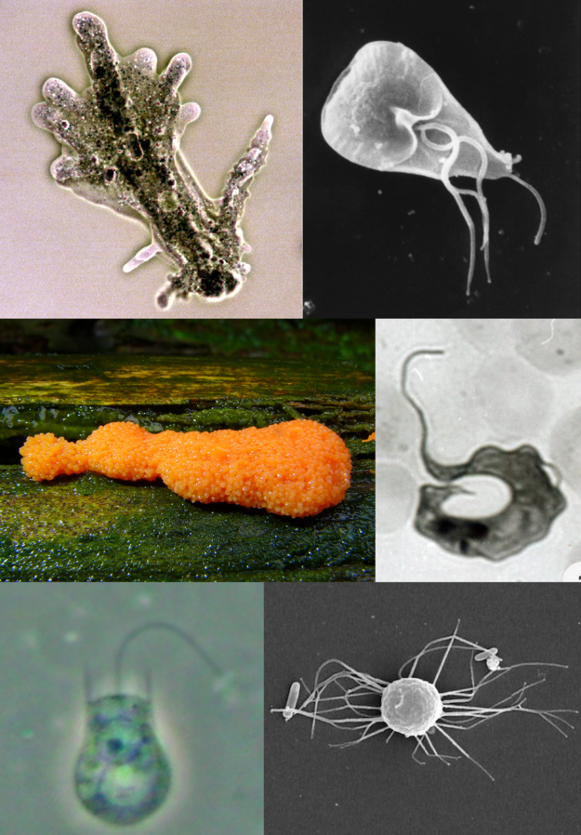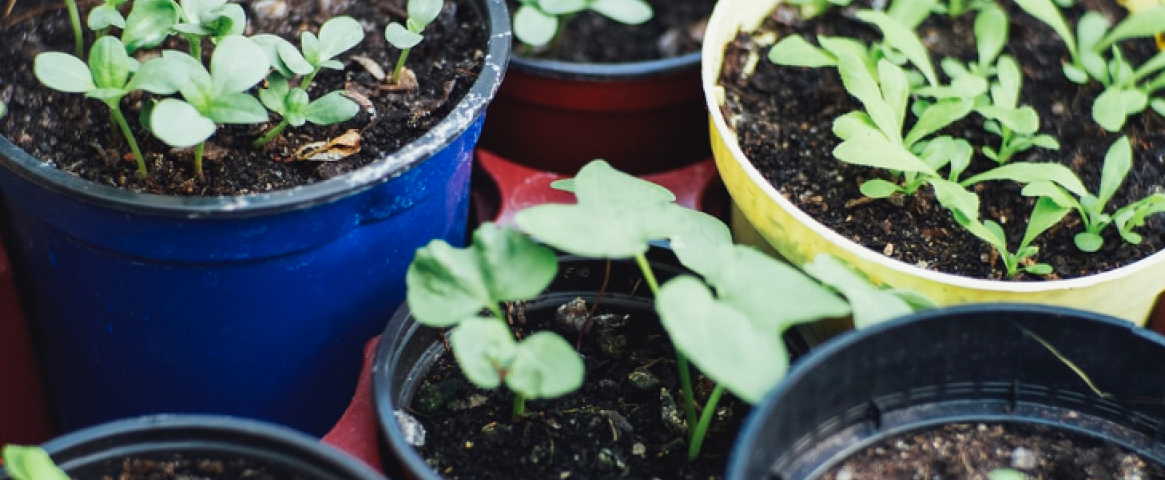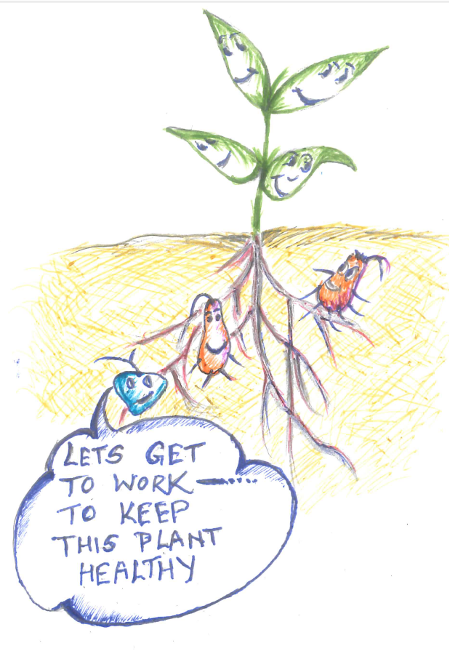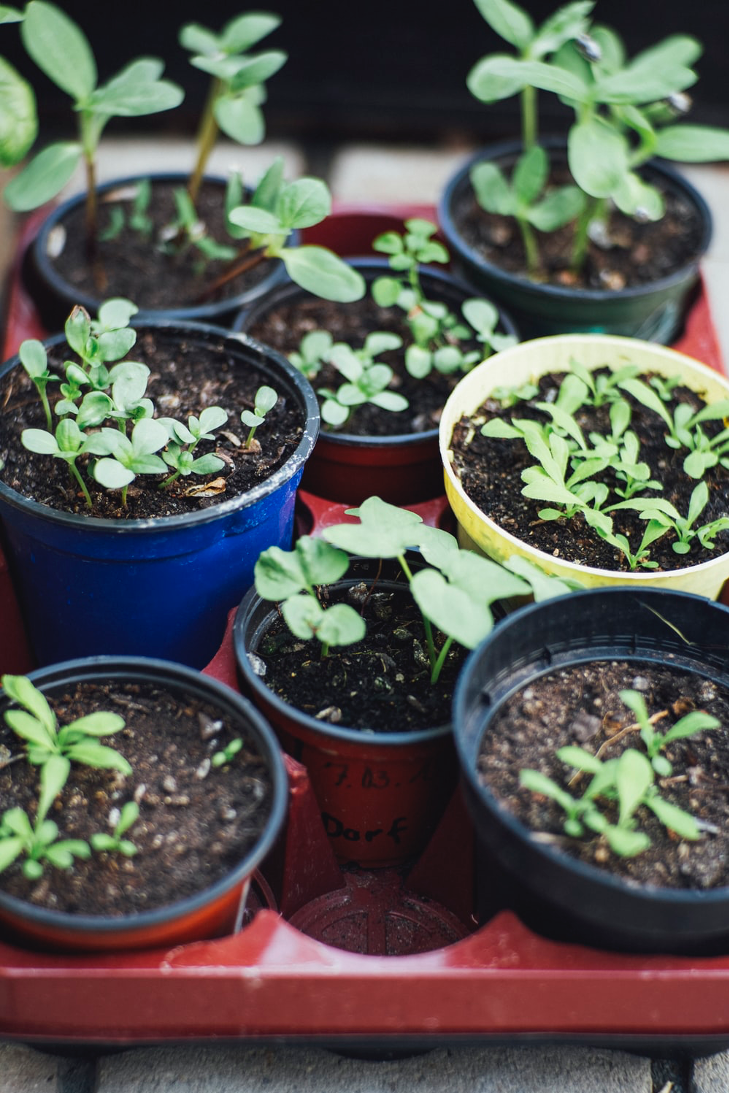By Kiran Gurung
Have you ever wondered whether the soil in your garden is good for your plants? For answers, you might want to consider some underappreciated tiny organisms called protists, according to a study by a group of scientists from universities in the Netherlands and China.
Protists are microorganisms that have a nucleus in their cells, just like plants and animals and unlike bacteria. Most of them are single-celled.
In the study, published in March 2020 in the journal Microbiome, the researchers uncovered a link between the health of plants and the protists associated with them. Their work supports earlier research hinting that protists may act as “top-down controllers” of the environment surrounding plant roots.
In general, soil protists have received less attention than their microbial counterparts, bacteria and fungi. Why? Until recently, it was very difficult to grow protists for study, said Stefan Geisen, an author of the new study and an expert in soil protists affiliated with Wageningen University & Research and the Netherlands Institute of Ecology (NIOO). But a little over a decade ago, new gene-sequencing techniques made it a bit easier to look for these organisms.
In the new study, researchers were able to survey the relationship between whole communities of microorganisms and plant health in the field. Earlier studies had been conducted under artificial lab conditions. The team of microbiome and plant researchers analyzed genes from soil samples to identify the microbial community members and their possible influence on the plants.
They found that the presence of certain protists in the soil during plant establishment helped predict whether the plant would be healthy as it grew. Of the protists analyzed as potential “indicator species,” 13 were associated with healthy plants. Seven of those were predators likely preying on bacteria. But only three species were present in soil from diseased plants, with two of them being predators. Strikingly, the abundance of the predatory protists was negatively correlated with the presence of disease-causing bacteria and decreased over time in diseased plants.
Normally we know protists as notorious killers. Plasmodium causes the infectious disease malaria. Another protist, Phytophthora, is a fungus look-alike that kills plants. Myriad protists exist in the environment, including many that are not well known.

A number of studies have shown that protists have another side, providing benefits to plants and playing pivotal roles in ecosystems. Some protists feed on dead matter and help release nutrients in the soil. Others prey on microbial counterparts, including bacteria and even fungi. These predatory protists are often responsible for controlling the populations of those bacteria that are harmful to the plants. They do so primarily by feeding the disease-causing bacteria or by provoking the non-harmful bacteria to suppress the harmful ones.
There is a broader reason to study protists in a scenario where bacteria and fungi have already been well documented. The team speculates that a new understanding of plant health might come from a closer analysis of the role of specific protists, especially during plant establishment. For example, species that are associated with diseased plants might not be associated with healthy plants.
“Soil protists can be quite good predictors of the plant health at an early stage, especially in cases when there is no visible symptom,” explained the study’s corresponding author, Wei Zhong of Nanjing Agricultural University, whose expertise includes plant disease and plant-associated microbes.
Other studies have shown that protists are indicators of ecosystem health in aquatic environments. But teasing out their role in a complex ecosystem can be challenging. In the soil, protists could be influenced by stressors and other environmental factors. Geisen and different collaborators who conducted another study in experimental sites in China in 2019 found that the soil protist community tended to be indirectly affected by nitrogen-based chemical fertilizers.
Geisen is hopeful that protist studies will be helpful to agriculture. “You could predict the plant health,” he said. “For example, before seeding, we can check the protist community of soil to determine its suitability.”
There is still a long way to go to develop such tests and interpret their results exactly. But with more work, he said, scientists might develop protist-based biocontrol products to help suppress disease-causing microorganisms.
An open question is how such protists interact and communicate with other soil microorganisms. Before considering biocontrol projects, Geisen noted, “We should also look at the holistic approach of diversity.” In the same study, the researchers found that protists’ influence on the bacterial community might help activate a particular group of microbial metabolism genes. These genes trigger the production of chemicals that fight against the harmful bacteria. In healthy plants, both predatory protists and these genes were much more abundant than they were in unhealthy plants, and the harmful bacteria were correspondingly less abundant in the later stages of plant growth. Thus, protists might determine both the development of disease-causing bacteria and plant health through modification of the bacterial community.
Scientists hope this work sheds light on some of the multiple bonds that protists form with their fellow microorganisms. Zhong adds, “It is important to note whether any organism is affecting the other, and how they altogether affect the plants in turn.” Under a framework called the Global Soil Biodiversity Initiative, several other groups are studying soil protists to understand their community composition, factors that shape the protist populations and their relations with other microorganisms.
Kiran Gurung is a graduate student at the University of Groningen in the Netherlands. This story is part of the science writing internship for the NASW Summer Virtual Mentoring Program, COVID edition 2020. You can contact her at Twitter.
This story was produced as part of NASW's David Perlman Summer Mentoring Program, which was launched in 2020 by our Education Committee. Gurung was mentored by Rosalind Reid.




